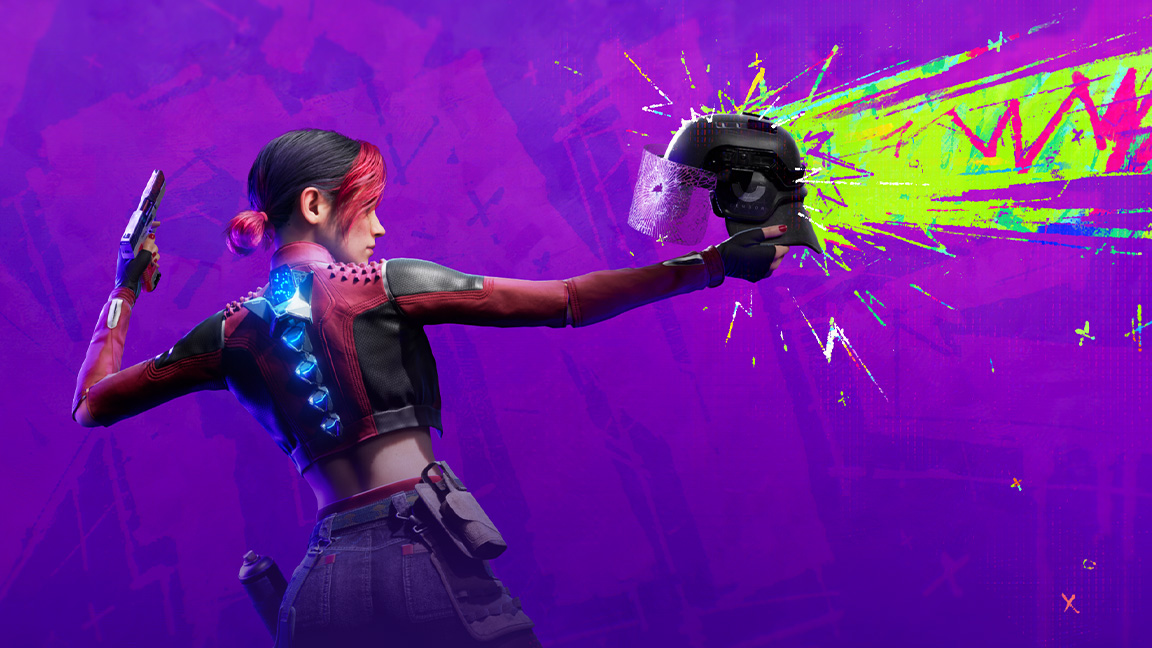
The Cyprus-based game studio Nekki has been around for a while now, and is probably best known for the Shadow Fight series of martial arts games on mobile. But SPINE is the studio’s first attempt at a AAA PC and console title, and what’s more, the developers are going all-in with a transmedia approach that includes tie-in comics, board games, merchandise and even a movie and TV series.
So how do you go about creating a brand-new franchise from scratch? Art director Alexander Nemov and lead character artist Olga Ivanova explain about the design processes that have gone into creating SPINE, how inter-team coordination has been key to creating a cohesive world, and how Unreal Engine 5 has been a boon to this small team.
The trailers released for SPINE so far reveal a cyberpunk-influenced gun-fu romp starring a punky rebel with a talking spinal implant, and featuring some truly gorgeous Unreal Engine 5 visuals that really pop. (We've already seen how UE5 has empowered art in Remnant 2 and the forthcoming Senua Saga: Hellblade 2.)
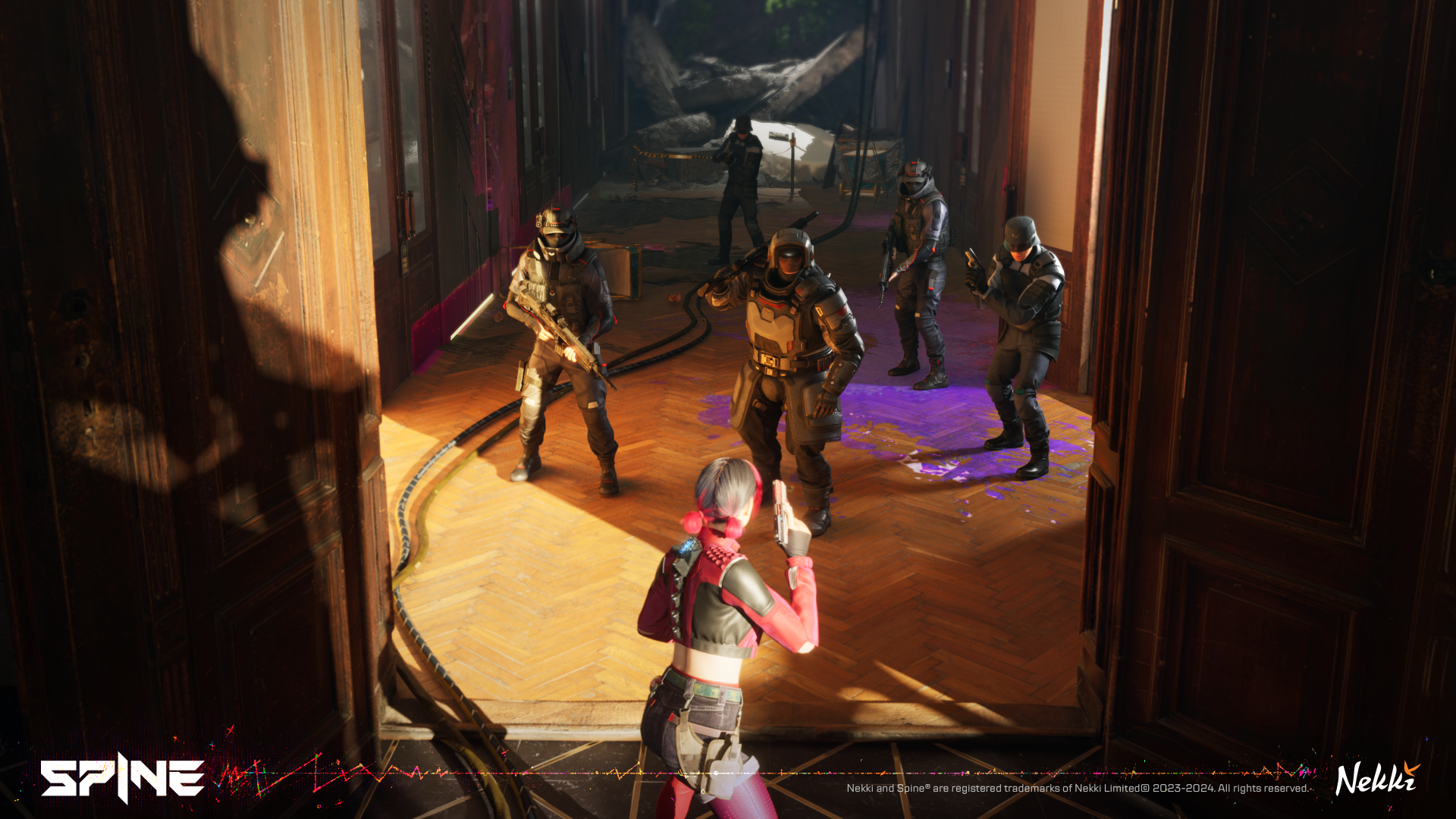
“Unreal Engine 5 for us offers unprecedented creative freedom,” enthuses Alexander. “Unreal has many obvious advantages, such as Nanite, intuitiveness and familiarity, performance and excellent support from Epic. The most obvious application of its power is to focus on the beauty of lighting and realism, which is very fitting to our main intention of being an action movie-like experience.” He adds that UE5 is particularly powerful when it comes to lighting. “Lumen is where Unreal Engine 5 really shines,” he says.
However, Alexander notes that although the game is being built around UE5, the team has also developed its own custom data shaders, as well as its own animation software. “One of the key elements ensuring cinematic quality is the animations we create using our own proprietary software – Cascadeur – which allows us to create truly film-like choreography and action,” he says.
SPINE's unique cyberpunk origins
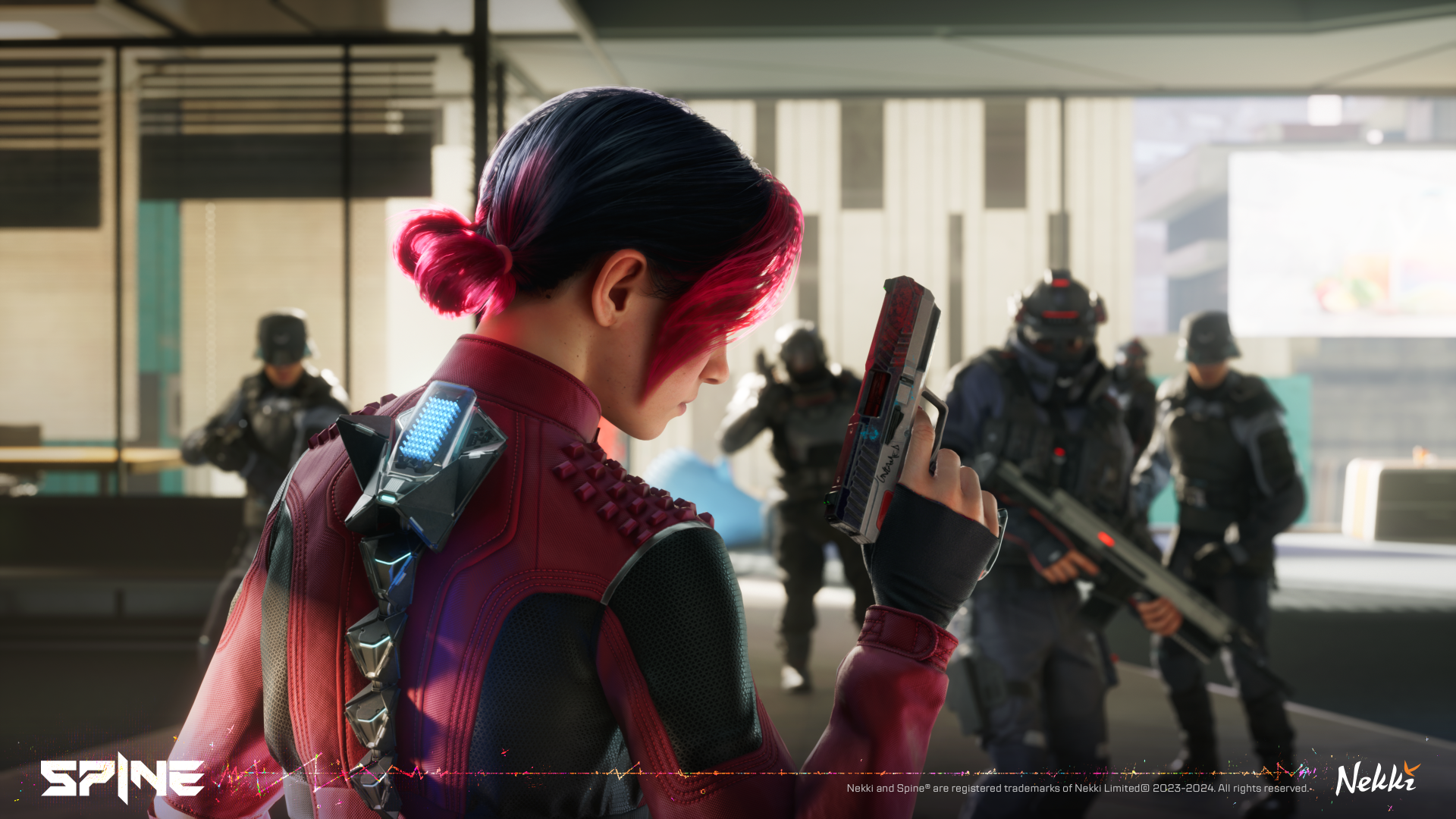
The story and visuals of SPINE are firmly embedded in the cyberpunk genre, and Alexander cites influences such as Blade Runner, Ghost in the Shell, Deus Ex, Cyberpunk 2077 and Detroit: Become Human. Asia is a clear inspiration for the game’s aesthetic, but Alexander adds that the team wanted to move away from what he calls “the usual retro-futurism look”, and instead opt for a more modern feel, relying on contemporary trends in fashion and industrial and graphic design.
The gun fu gameplay has been inspired by movies such as John Wick and Equilibrium, while the plot sees a powerful AI ruling over a futuristic city. “We hope that our game will be a warning of sorts against a digital dystopia,” says Alexander.
Olga Ivanova emphasises that they wanted SPINE’s near future world to feel both unique and realistic: a world that could feasibly be extrapolated from the technology trends of today. “We didn't want to make a world full of flying cars and cyber implants like in sci-fi movies,” she says. “Our main references are more contemporary, not futuristic.”
“We wanted to create vivid and archetypal characters, but at the same time without creating caricatures,” she continues. “We make subtle references to Japanese culture so that costumes and interiors look like something which could have organically emerged and don't resemble museum exhibits or dioramas.” Above all, Olga says the emphasis has been on creating designs that are functional rather than fantastic: the clothing must be practical to wear, for example.
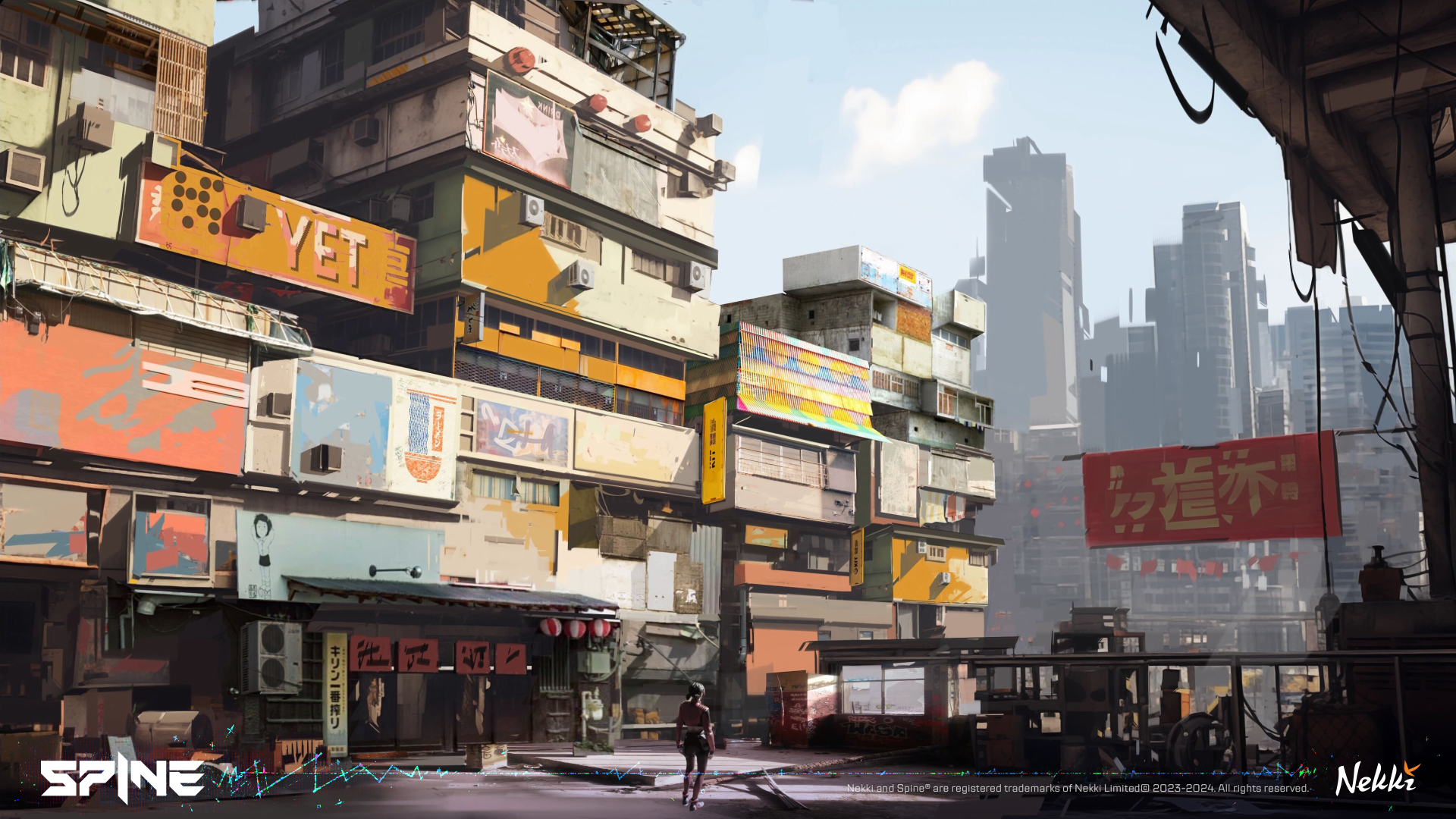
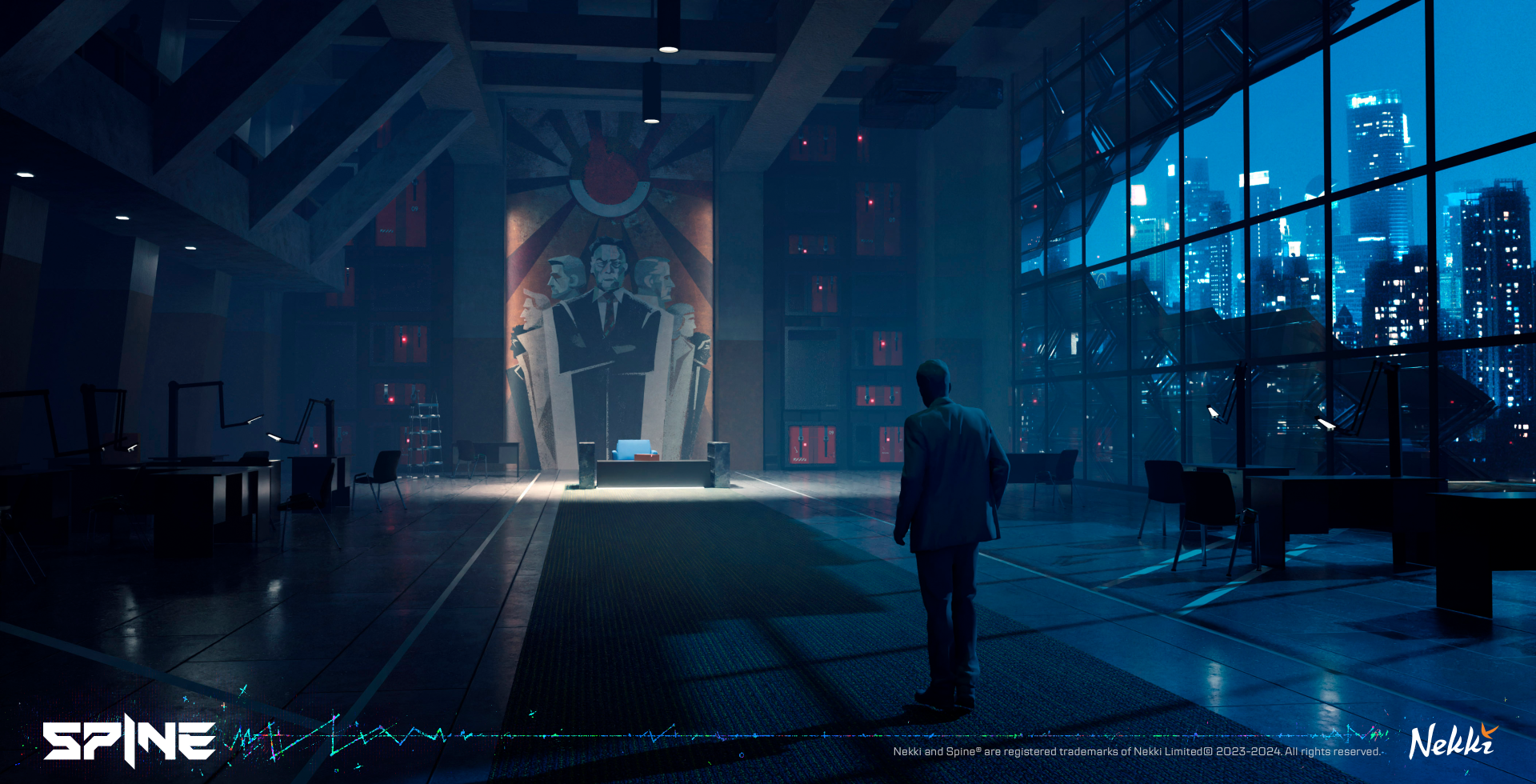
In addition, Olga says the team has paid a lot of attention to tiny details like graffiti, advertising and even tattoos. “Some of these aspects will probably only be fully appreciated by a very attentive player,” she says, “but these are examples of how small details bring life to the world.”
Olga says that the artists were given wide-ranging creative freedom. “Since our team includes people of different ages and cultural backgrounds, we thought it would be interesting if each of them brought their own details to the visual design of the game,” she says.
The result is that locations are peppered with unique features that reflect elements of many different cultures, like scales in the marketplace that a member of the team remembered from their childhood. One of the enemy costumes features a detail from South Korean police equipment that an artist saw while on holiday.
Behind the character design
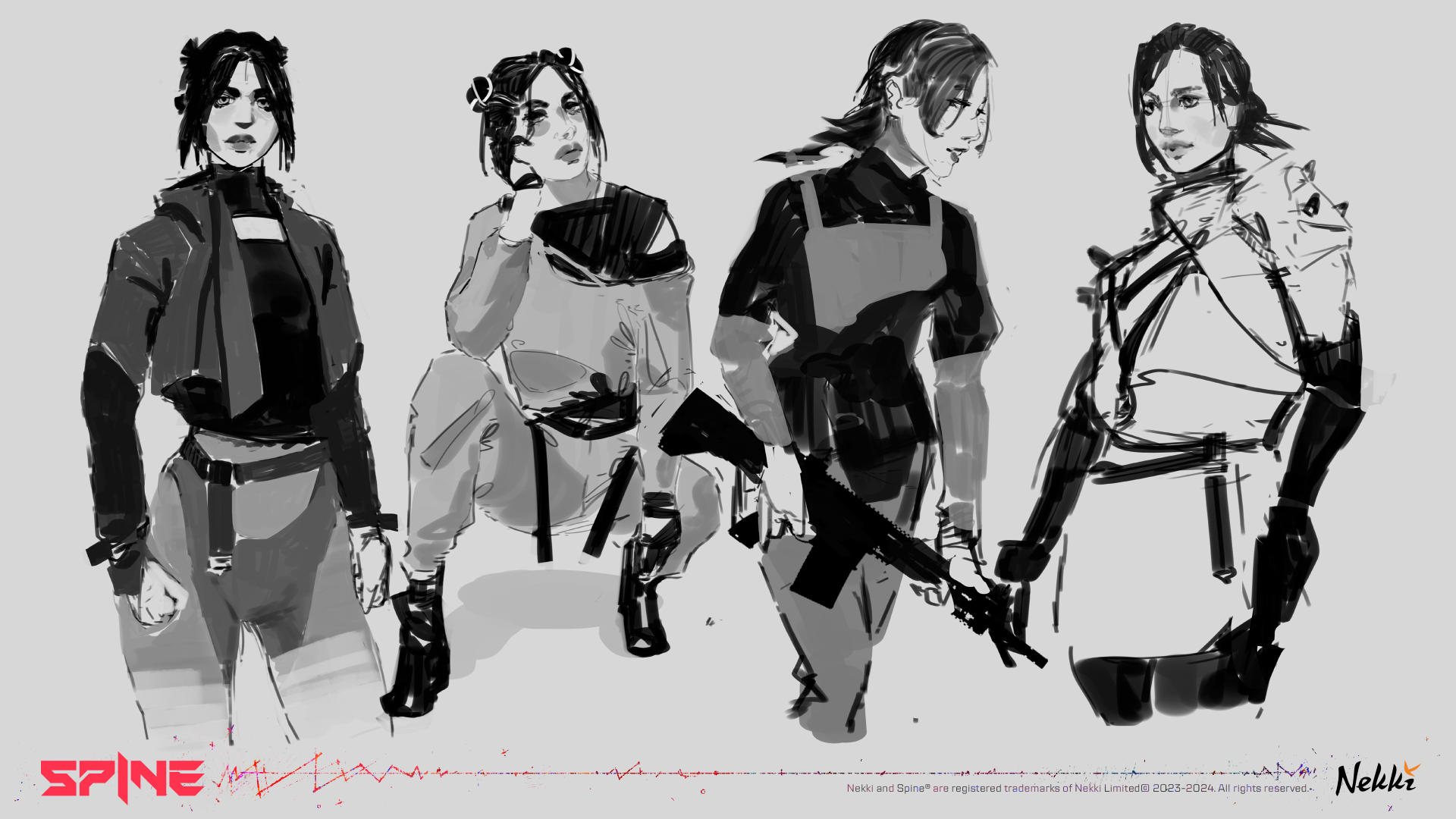
When it came to designing the lead character, Redline, Olga says the idea was to create someone that players would want to embody: “Not perfect, but grounded and appealing.” Redline is brave, determined, impulsive and confident – perhaps overconfident at times. “We wanted her design to match the main character herself – bright, bold and rebellious, not fashionable and neat,” she says, adding that the spikes on her jacket, the patches on her clothes and her brightly-coloured hair reflect her desire for self-expression. “She stands out, even in her exaggerated world,” says Ivanova. “We weren’t interested in creating a doll-like character.”
Redline’s appearance stands in stark contrast to SPINE’s antagonist, The Judge, leader of the security forces of Tensor, the artificial general intelligence that rules the city in the form of a digital dictatorship. “It was important to design Redline and The Judge in parallel because their differences help define them,” says Olga.
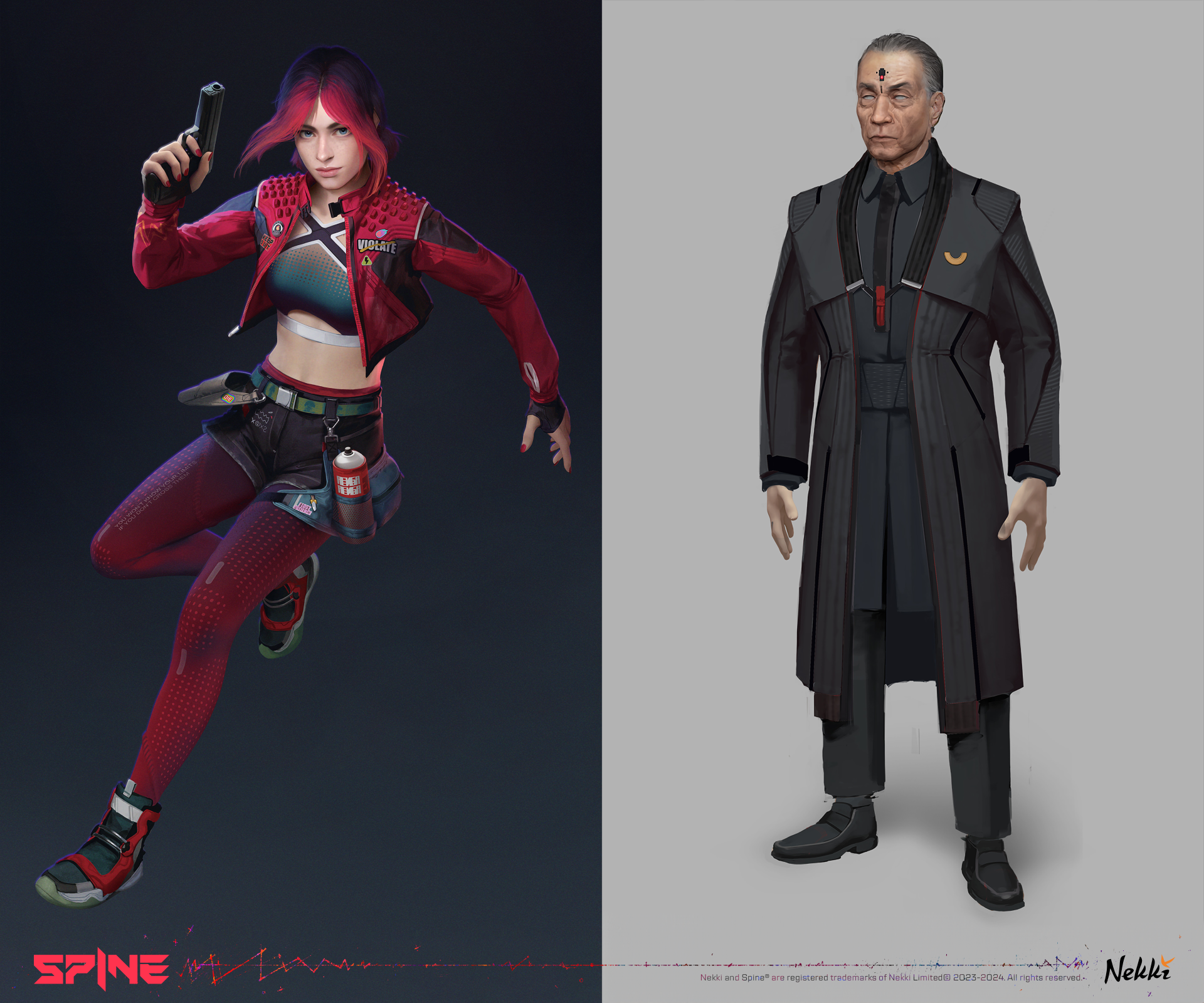
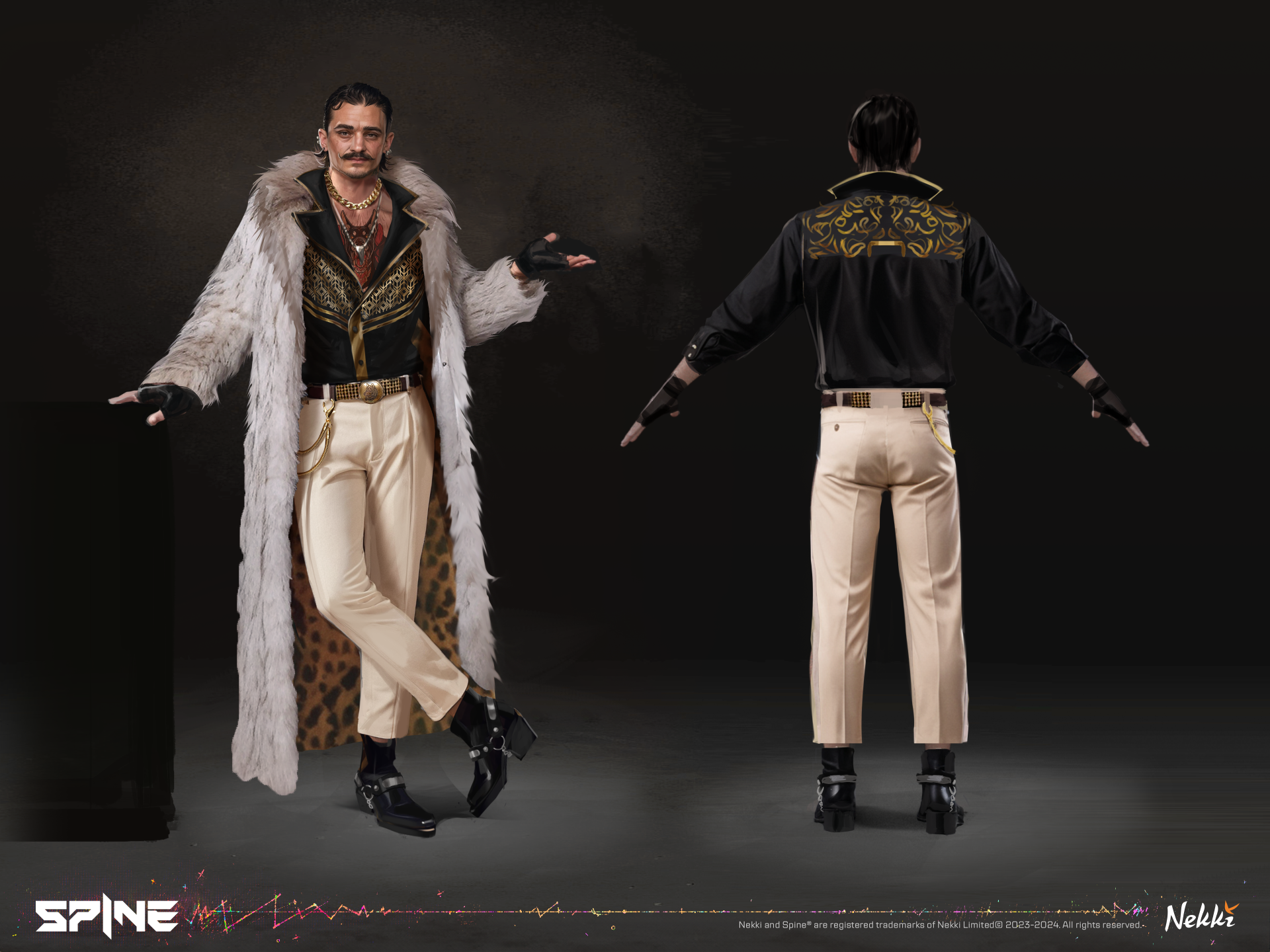
The Judge is dry, inflexible and conservative, a rigid leader with questionable moral values and a clear vision of a bright (to him) future that not everyone will be allowed to access. “Formality, restraint, limits and boundaries, and almost religious adherence to order and tradition: we wanted all this to be read in his image, in his attire, in his implants and, of course, in his own ability-enhancing Spine,” says Olga.
She adds: “Redline is a person from another world by comparison. She is an artist who uses art to protest and express outrage against injustice and inequality. Emotions are boiling inside her, she is young and energetic, and reflects the idea of a future full of personal freedoms and lack of citizen control.”
The Judge's neat, minimalistic, sombre and sinister costume contrasts dramatically with the motley and joyful clothing of Redline, a contrast that’s most evident in the colour scheme. “In Redline's design we used bright red (of course!) combined with contrasting black to make her image dynamic and assertive,” says Olga. “In the Judge's costume, we decided to avoid colour altogether. This not only makes his costume more formal and static, but also clearly paints him as a villain belonging to a colourless and soulless authoritarian system.”
Creating a consistent world
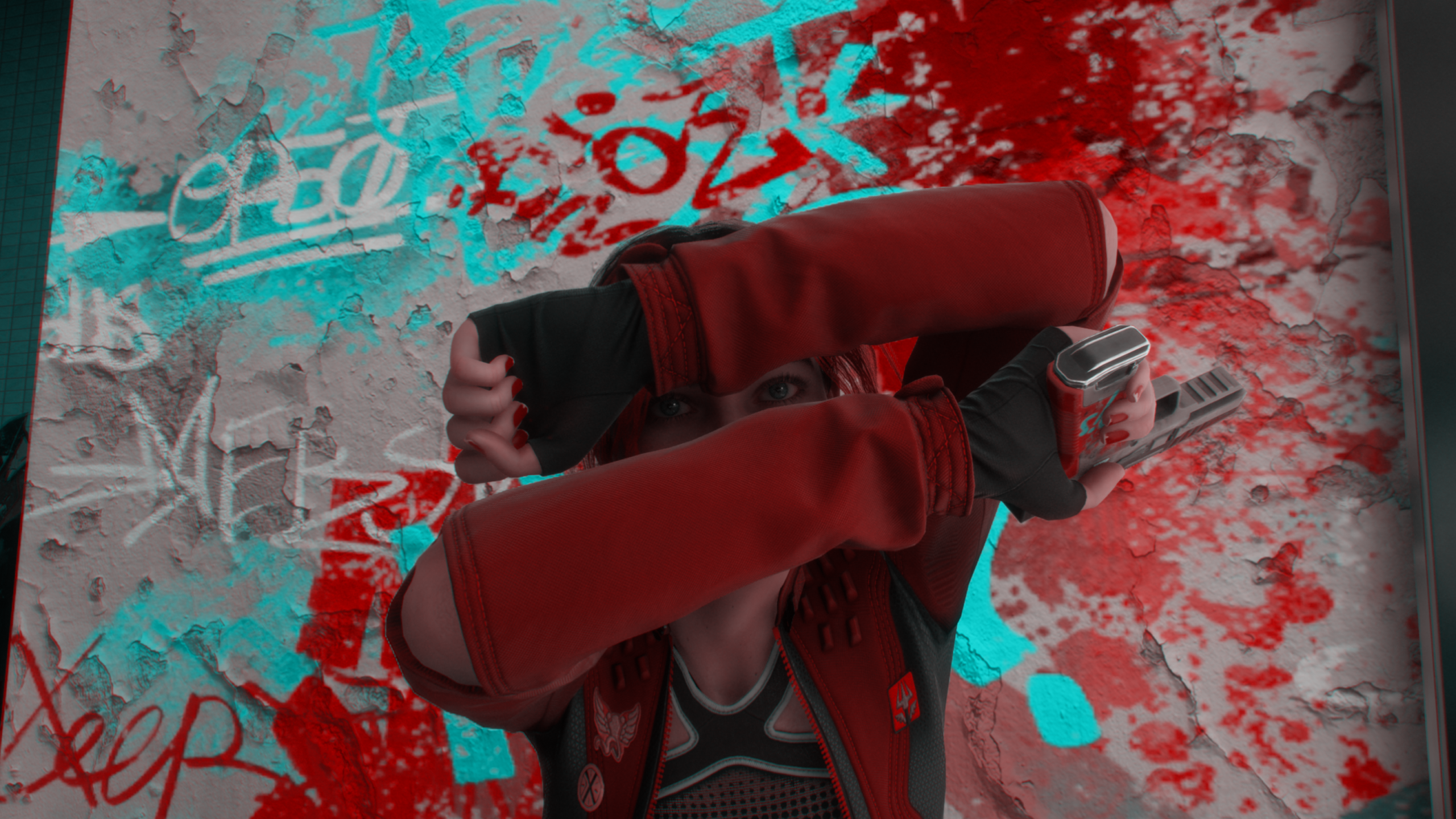
“The main challenge for us was to create a consistent world and to clarify the boundaries and rules of visual style,” says Olga. When starting out development on a new IP with a completely blank slate, the sheer variety of interesting stuff that can be used for inspiration “can blow artists' minds”, she says, and the difficult part was boiling this down into a convincing world.
“It was important from the very beginning to define what is possible in our world and what is not,” she Olga, providing guidelines for things like social structures, the look of buildings, the technologies available and even the food people eat.
This design and creativity process involved endless team discussions, but the result was a detailed set of guidelines on even tiny things like the preferred colour choices for different social groups or the nature of the geometric shapes that appear on costumes. “Those guidelines helped us a lot in making choices during the design process, giving us a detailed and consistent world, and enough material to create sequels and expand the SPINE universe in the future,” says Olga.
Alexander adds that coordination between teams has been essential during this whole process. “One of the main challenges is to ensure that the characters and the environment work together: the characters are distinguishable, and the environment doesn't look pale,” he says. “Working separately, this task cannot be accomplished. That’s why lead artists from our different departments attend each other’s content review meetings.”
Alexander adds that the foundation of the team’s production culture is openness and strong inter-team connections. “Organising synchronisation processes is just as important as organising development processes,” he says.
Creating large art sets
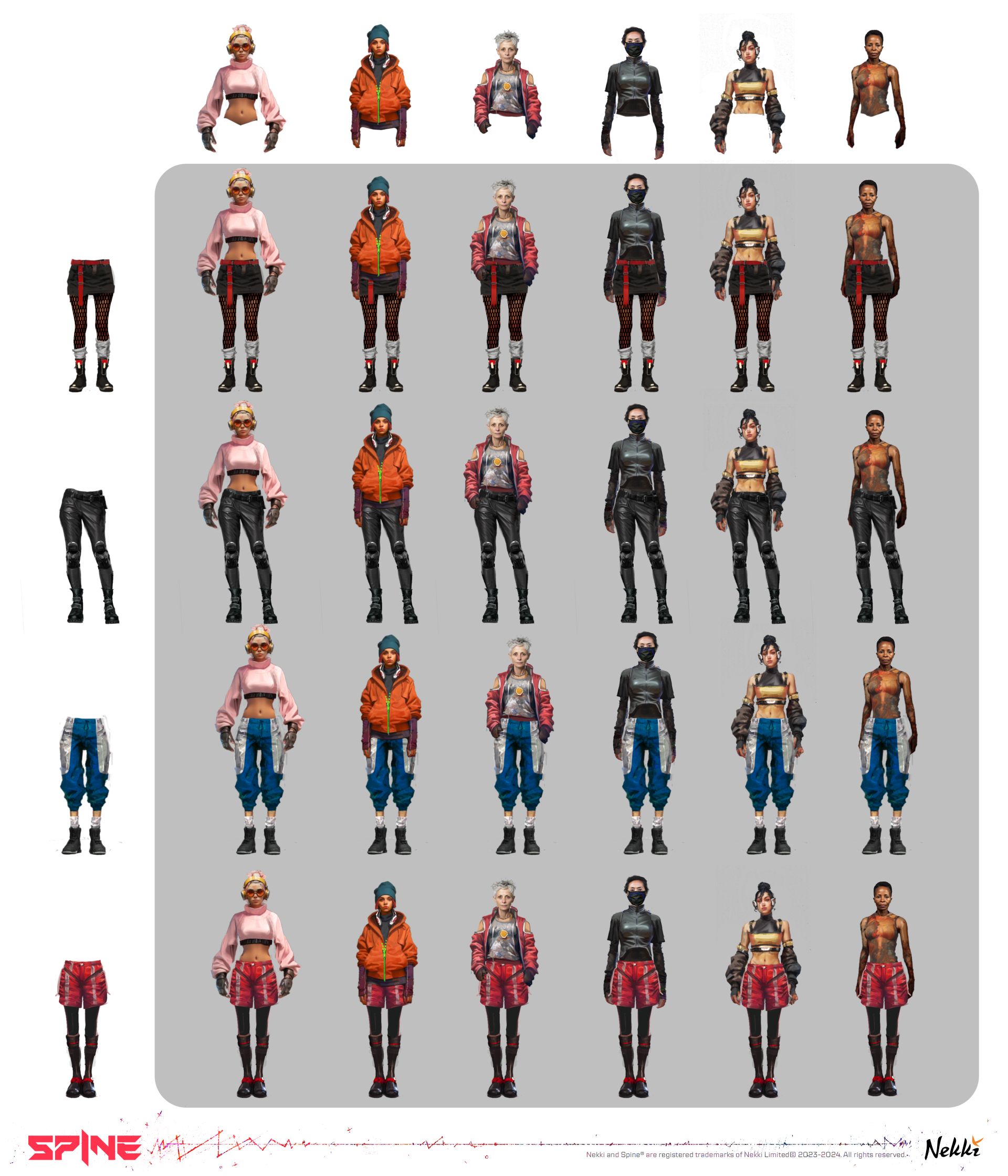
Creating a brand new franchise from scratch has certainly been a creatively fulfilling exercise, but Olga notes that commercial reality has to be acknowledged at some point. “We have to ship a game, so we cannot dream forever!”
Bearing this in mind, she says the team has had to make hard decisions on which things to focus on. “After all, the time saved on a less important element is time we can devote to the development of something that will evoke strong emotions in the player,” she says. “This is a careful balance, because often small elements can really bring a world to life.”
One way the team has been able to save time but still focus on creativity is to create modular art assets. “We need a huge number of assets, and it would be irrational to make every single one of them from scratch,” she says. “By dividing the assets into parts, we can combine them in different ways and produce a variety of content in ways that feel new and fresh to the player.”
We use drafts: raw, undetailed models that are made very quickly
Olga Ivanova, lead character artist
Olga adds that it’s similar to how people dress: “You may see many people wearing denim jeans every day, but how they mix and match their wardrobes creates their identity.”
Like Alexander, she highlights the importance of coordination between departments, particularly when it comes to promoting efficiency. “We try to work in parallel whenever possible so that we don't block each other's work,” she says. “To achieve this, we use drafts: raw, undetailed models that are made very quickly. This lets animators and game designers start working quickly, but also helps to identify potential problems in practice and save time on later iterations.”
Above all, it’s the strong connection between the art team and the other departments that makes this possible. “We are constantly discussing and exchanging ideas and feedback,” Olga says. “This is how we manage to make creative and practical solutions that fit the overall idea of the game. And besides, it's fun!”
You can fund more details on the SPINE website, and if you've been inspired to get into game art and development, read our guides to the best laptops for animation and the best drawing tablets to get the kit.







